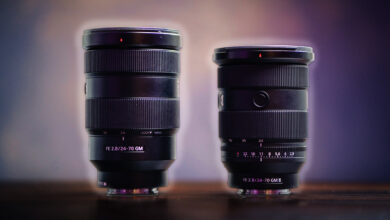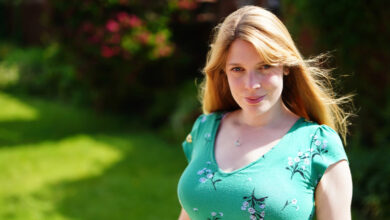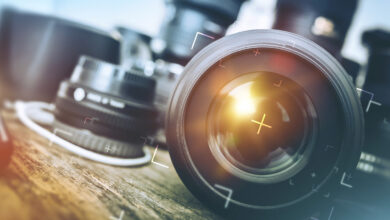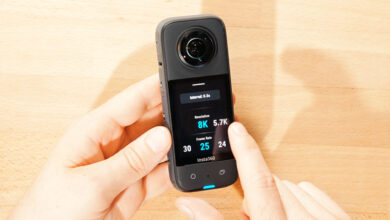Really? Is Expensive Gear Actually Even Worth It?
With the market inundated with countless products, it can be overwhelming to choose the right price point for the gear you need. Does the price tag truly reflect the quality and performance of the equipment? Let’s dive into this question.
I began my photographic journey with fairly low-end gear, consisting of a $50 speedlight and a $10 umbrella. Back then, I often found myself admiring photographers who worked with medium format cameras, professional flashes, and top-notch studios. There’s undoubtedly a point where investing more money can yield better results. However, there’s also a critical juncture where you must be judicious in how you spend your hard-earned cash. Consider this scenario: You have the option to purchase a budget-friendly lens or an expensive camera body. Which one should you prioritize, and where does the value truly lie? Let’s explore where your investment can make the most difference.
Cameras
Cameras are often the first item on a photographer’s shopping list, and they are also the easiest to overspend on. Camera manufacturers excel at marketing and often present marginal improvements as groundbreaking innovations that every photographer must have. These marketing tactics can lead photographers to covet slightly more expensive, marginally better camera equipment. However, it’s essential to remember that a camera is fundamentally a light-capturing device, and its core functionality should be the primary focus. You don’t necessarily need every high-tech feature, such as animal tracking eye autofocus, to create outstanding photographs. While some features can streamline a photographer’s workflow, professionalism ultimately hinges on your ability to produce compelling images. It’s worth noting that many photographers who shoot exclusively on film or use wet plates are highly regarded, not solely for image quality, but also for their unique approach. Keep in mind that the latest and greatest camera will become outdated in a few years, just like the latest smartphone. Consequently, I recommend refraining from splurging on the camera body. You can easily save several hundred, if not thousands of dollars, in this regard.

Lenses
Lenses play a more critical role than cameras, as they refract and direct light onto the sensor, akin to your eyes focusing light onto your brain. If you have excellent eyes but limited processing power (analogous to a slower camera), your perception remains compromised. Consider my experience during my Canon 5D Mark II days, where I used a range of lenses. From the subpar 28-135mm to the exceptional 24-70mm f/2.8, the differences were profound, even though the sensor technology remained the same and lacked animal tracking eye autofocus. The sensor’s singular focus point was relatively reliable, a testament to the lens’s impact. I applaud photographers whose lenses cost more than their camera bodies. The takeaway here is simple: prioritize investing in lenses over cameras.

Lights
The realm of lighting presents a nuanced perspective. While expensive lights are a pleasure to work with, they are not an absolute necessity for creating exceptional work. In fact, you can achieve outstanding results with flashlights and simple speedlights. However, there are notable limitations associated with cheaper lights, which become significant in certain scenarios. Each light source, especially flashes, has several critical properties: color consistency, flash duration, power output, and recycle time. Investing in pricier flash gear yields advantages such as faster recycling, shorter flash durations, and more consistent results. These factors prove invaluable when undertaking high-end assignments, action photography, or when you simply need reliable flash equipment. I’ve produced a significant body of work using high-end flash generators from the 1990s, and they perform as effectively as new models. Overall, I recommend allocating a reasonable budget for off-camera lighting but also recognize that used high-end equipment from previous decades can be more than sufficient for most work. For instance, the Pro-7a flash generator offers an impressive 1/1,600-second duration at maximum power, while the latest Pro-11 model provides a 1/800-second value for comparison.

Light Modifiers
Light modifiers should not be underestimated, as they significantly influence the mood and ambiance of your images. Think of them as essential tools for shaping and playing with light. A quick glance around my studio reveals that I own more light modifiers than lights and cameras combined. I’m passionate about manipulating light to create striking images, and I firmly believe that exceptional lighting is one of the most noticeable and critical aspects of any great photograph. Quality modifiers, particularly hard modifiers like reflectors, offer greater efficiency and longevity. Investing in top-notch modifiers won’t immediately transform your photos, but you’ll undoubtedly appreciate the boost in quality and performance they provide.

Grip
Last but certainly not least, don’t overlook the importance of stands, tripods, arms, and other accessories. When you’ve already invested in high-quality lights and modifiers, the last thing you want is for them to fail due to subpar support equipment. Even a beloved 1990s Fresnel light can be damaged if not properly secured. I highly recommend investing in sturdy light stands and tripods. Fortunately, you can often find high-end equipment for a fraction of the cost when you come across the right online deals. Studios that are closing or downsizing may be eager to offload their equipment, prioritizing quick sales over maximizing profit. This presents an excellent opportunity to acquire professional gear without breaking the bank. Personally, I have a strong preference for Manfrotto products, including Gitzo for tripods and Avenger for light stands and boom arms. I tend to steer clear of lightweight, portable light stands, as I have concerns even when using them with lightweight speedlights or flash heads.

Closing Thoughts
Expensive gear isn’t always the answer to achieving better results. In my experience, an expensive camera may not deliver as much value as high-quality lighting equipment. Consequently, my investment in lights exceeds that of my cameras, and my light modifiers are among my most prized possessions in the studio. As a photographer, I’m willing to load up a roller cart with heavy-duty stands and transport them to on-location shoots because I understand that expensive lights and modifiers deserve equally robust support.
In conclusion, the choice to invest in expensive gear should be a deliberate one, considering your specific needs and goals as a photographer. While high-quality equipment can undoubtedly enhance your capabilities, it’s essential to strike a balance between budget and performance. Ultimately, it’s your creative vision, skill, and understanding of light that will have the most significant impact on the quality of your photographs.
